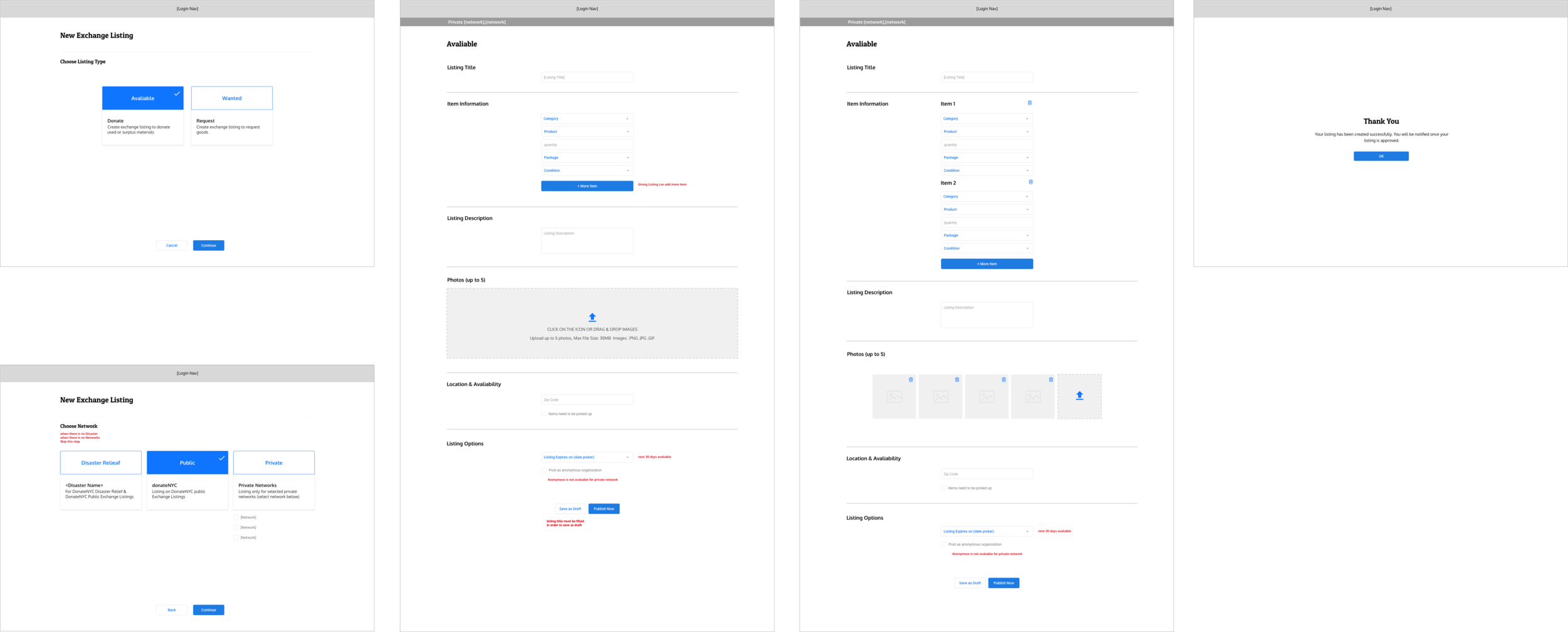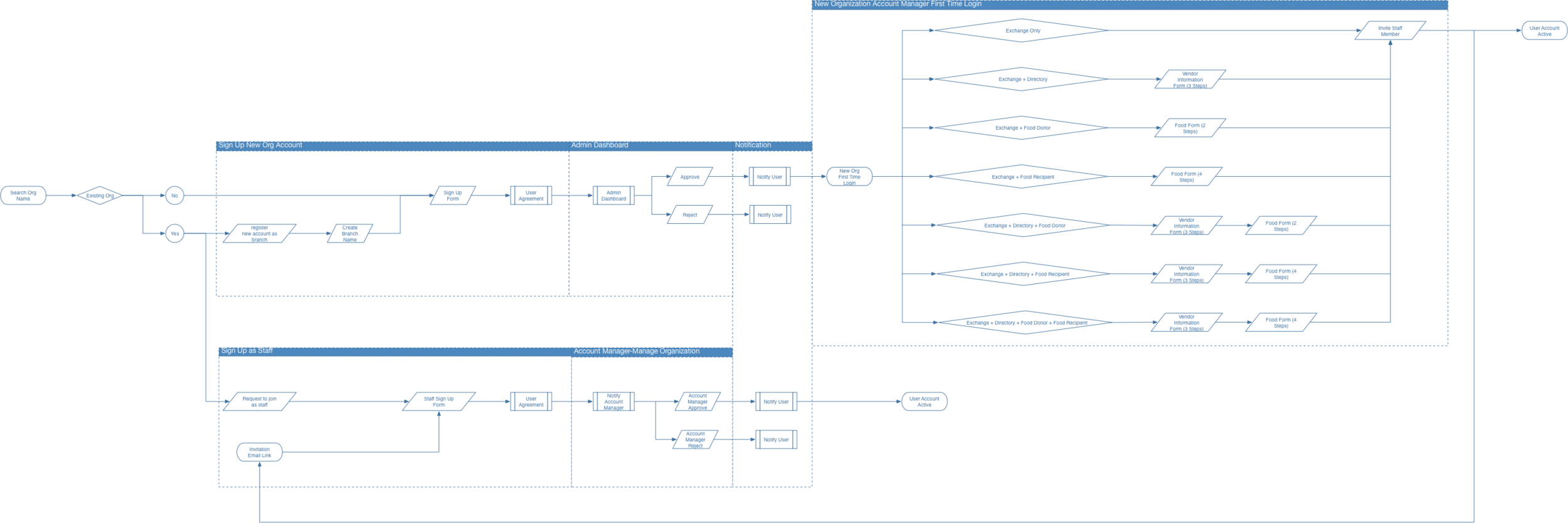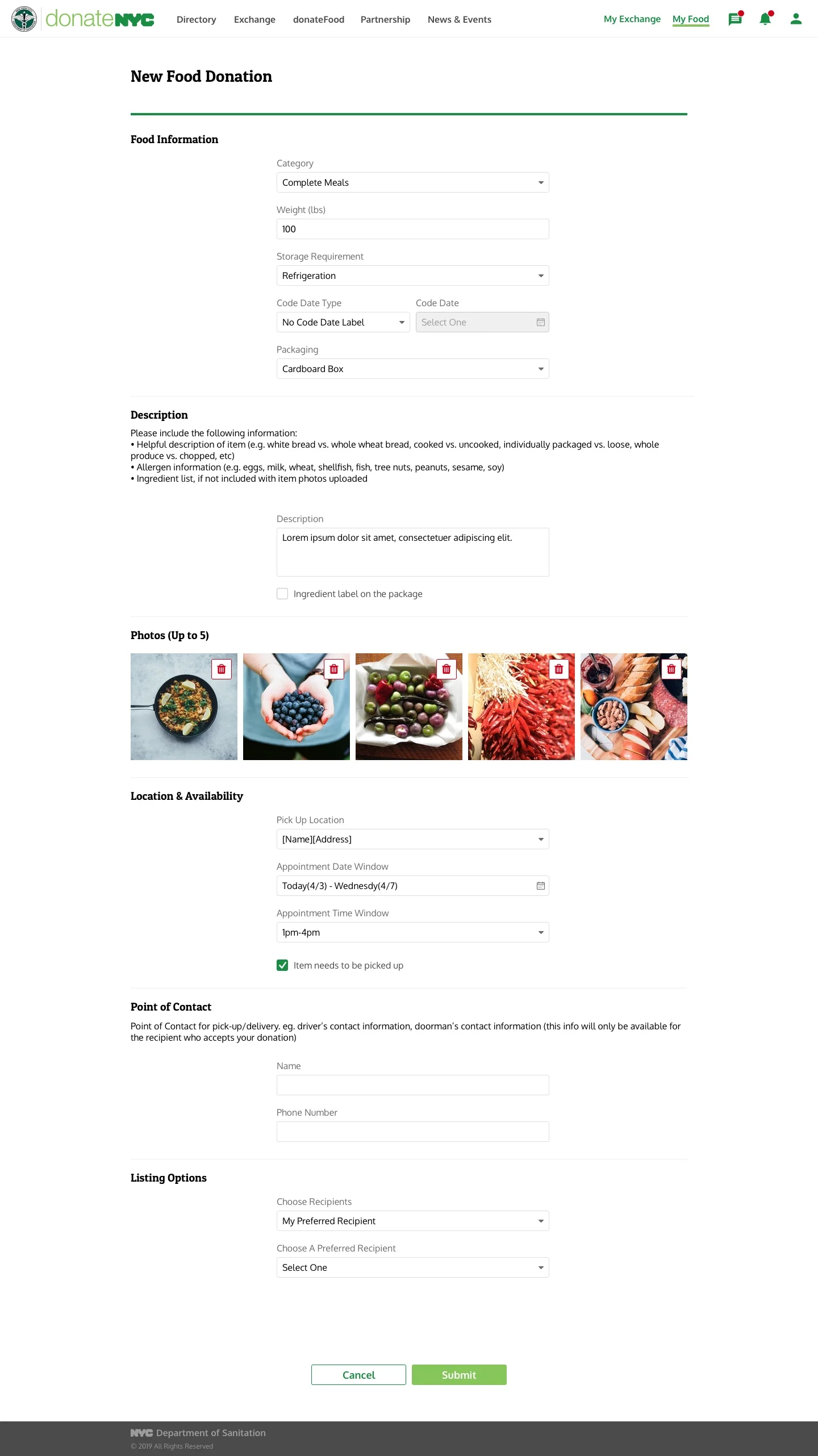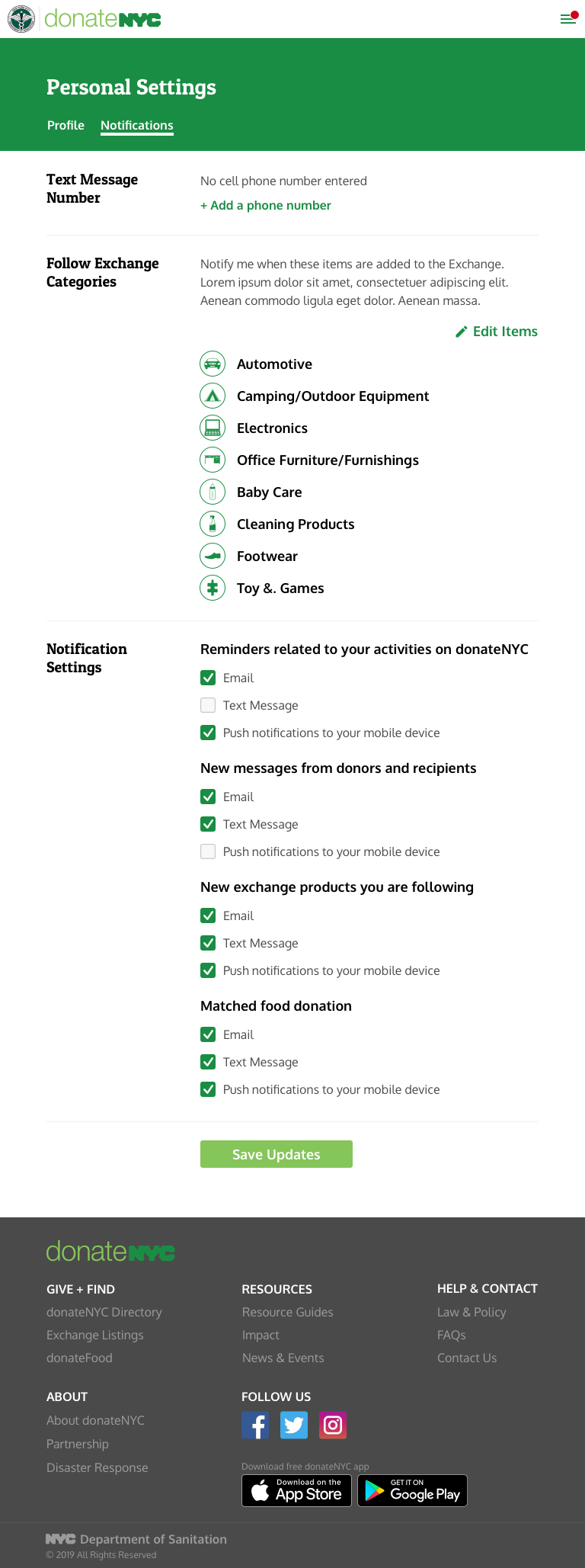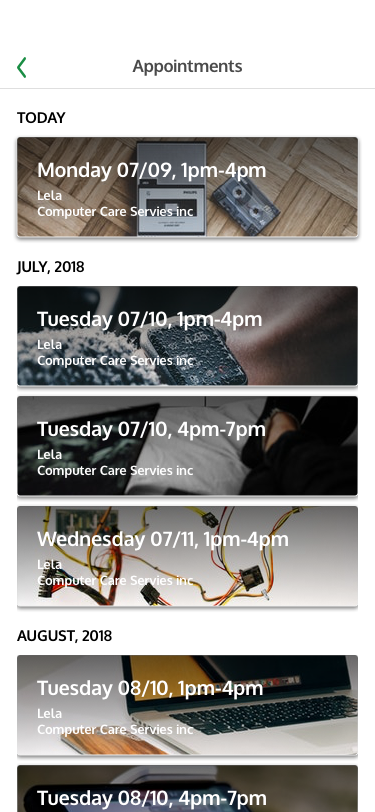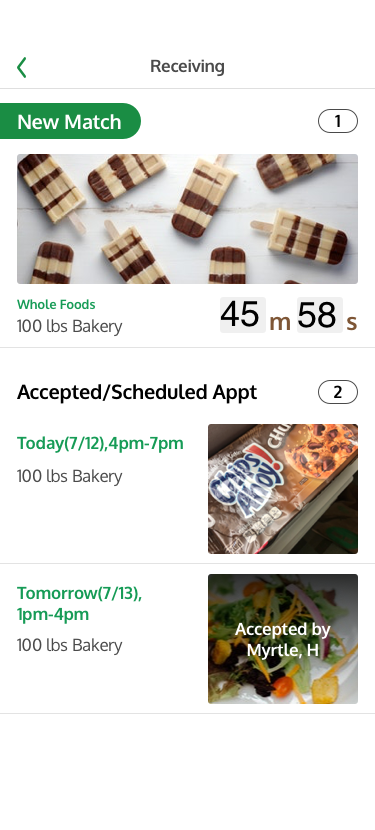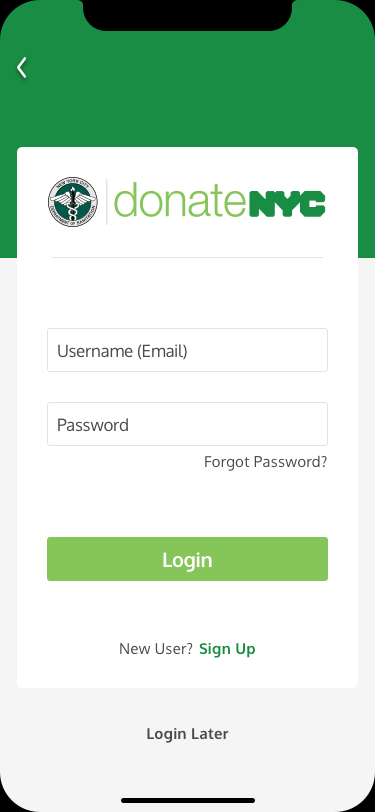Enterprise Platform
donateNYC was created previously to replace a collection of web entities that were used to orchestrate the trading of surplus goods. However, with the ratification of new local law 176 calls for the inclusion to support food.
The evolution of the platform is a culmination of years of business research, target audience validation, user interface design, user experience prototyping, user testing, web and mobile development on an enterprise level.
As the program owner for donateNYC, I have been at the forefront of advocating, planning, budgeting, designing, and executing the program.











